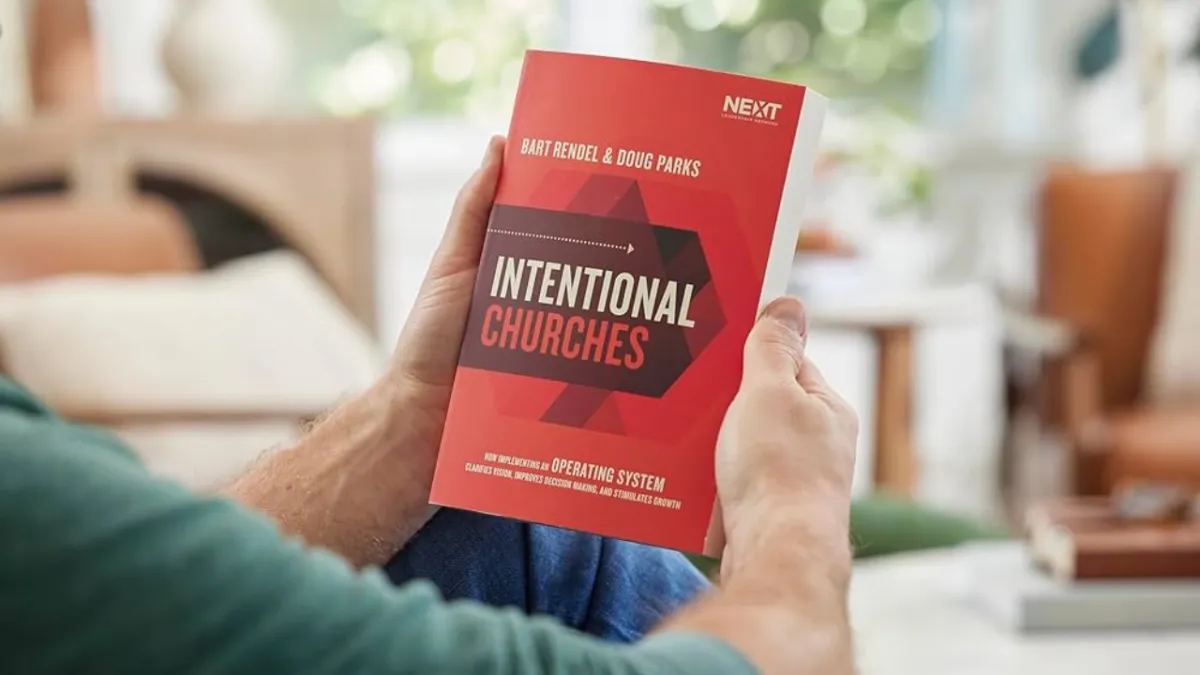
Intentional Churches: A Book Review
Book Review: Intentional Churches by Doug Parks and Bart Rendel — A Must-Read Guide for Every Executive Pastor
As executive pastors, we live in the tension between vision and execution, between theology and systems, between spiritual direction and operational clarity. That’s why Intentional Churches: How Implementing an Operating System Clarifies Vision, Improves Decision-Making, and Stimulates Growth by Doug Parks and Bart Rendel is such a vital resource. This isn’t just another book about church growth — it’s a blueprint for building clarity, focus, and strategic alignment around the Great Commission.
In this review, I’ll unpack the core principles of the book and explain why the executive pastor is uniquely positioned to lead the charge in putting them into practice.
What is Intentional Churches About?
Doug Parks and Bart Rendel, both seasoned church leaders and strategists, introduce what they call the Church Operating System™ (ChurchOS) — a framework designed to help churches reach more people for Christ by aligning every ministry and leader around one central mission: helping people take their next steps toward Jesus.
The core premise is simple but powerful: churches must be intentional about how they plan, align, and execute ministry. Growth doesn’t happen by accident. Healthy churches that reach people far from God do so because they’ve created a culture and system that keeps the Great Commission at the center of everything they do.
Key Principles of Intentional Churches
Here are some of the most impactful concepts presented in the book:
1. The One Number
Rather than tracking dozens of metrics, Intentional Churches encourages churches to focus on one number: the number of people actively taking next steps toward Jesus. It’s a redefinition of success — not attendance or giving, but spiritual movement.
2. The Great Commission Engine
At the heart of ChurchOS is what Parks and Rendel call the Great Commission Engine — the engine that drives momentum in a church. It includes:
Inspiring Weekend Services
Relational Connection (Groups)
Serving Engagement
Leadership Development
Intentional Evangelism
When all of these components are aligned and functioning well, the church gains clarity and traction.
3. Clarity Breaks
The authors urge church leaders to regularly step back from the grind and take intentional time to review, evaluate, and plan. These “clarity breaks” help leaders keep perspective, reset priorities, and ensure alignment with mission.
4. Team-Led Vision
One of the most refreshing aspects of the book is its emphasis on shared leadership. Vision is not the domain of the lead pastor alone. Every ministry leader — especially the executive pastor — has a role in clarifying and advancing the church’s direction.
5. The Engagement Pathway
Rather than a random assortment of programs, every church should build a clear and simple engagement pathway — helping newcomers and long-time attendees alike to take their next step in faith and community.
The Executive Pastor’s Role: Championing ChurchOS
While lead pastors are often the visionaries, executive pastors are the vision implementers. This book reads like a job description for what we’re wired to do. Here’s why the executive pastor is the natural champion of the Church Operating System:
1. Strategic Alignment
Executive pastors have the organizational purview to ensure every ministry, team, and department is aligned with the Great Commission Engine. We can ask the tough questions: Does this ministry help people take a next step? Is this program producing movement?
2. System Implementation
From staff structures to dashboard metrics to weekend service planning, executive pastors are the architects of sustainable systems. ChurchOS gives us a tested framework to build on — not just theory, but practical tools we can adapt to our unique context.
3. Catalyst for Change
Implementing ChurchOS often requires pruning, reimagining, and restructuring. That’s not easy — but the executive pastor is often the best-positioned leader to navigate change, manage resistance, and keep the team focused on mission.
4. Champion of Clarity
One of our most vital roles is to foster clarity across the board — in roles, in decision-making, and in how we define success. Intentional Churches equips us to lead with that clarity and communicate it consistently.
A Strong Recommendation
Whether you’re leading in a church of 200 or 20,000, Intentional Churches is one of the most actionable, clear-eyed books on church leadership I’ve read in the past decade. It avoids hype and focuses instead on sustainable, biblical principles for helping people come to know and follow Jesus.
If your church is stuck, this book will help you get moving again. If your church is thriving, it will help you refine and strengthen your systems. And if you're an executive pastor, it will help you see your role as absolutely essential to gospel effectiveness.
Bottom line: Every executive pastor should read Intentional Churches. Every church staff should process it together. Every church should implement its principles. It's that good!




Facebook
Instagram
X
LinkedIn
Youtube